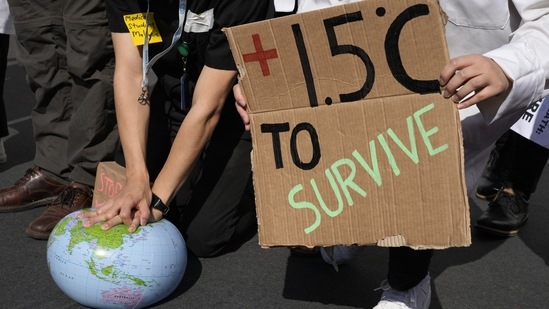Centuries-old oases in Morocco reeling from effects of climate change
Home to centuries-old oases that have been a trademark of Morocco, this region about 170 miles southeast of Marrakesh is reeling from the effects of climate change, which has created an emergency for the kingdom’s agriculture.
Residents of the oasis of Alnif say they can’t remember a drought this bad: The land is dry. Some wells are empty. Palm groves that date back more than 100 years are barren.

Home to centuries-old oases that have been a trademark of Morocco, this region about 170 miles southeast of Marrakesh is reeling from the effects of climate change, which has created an emergency for the kingdom’s agriculture.
Among those affected is Hammou Ben Ady, a nomad in the Tinghir region who leads his flock of sheep and goats in search of grazing grass. The drought forced him to rely on government handouts of fodder.
Also Read | Over 200 million under weather warning in US as winter storm brings blackouts, power outages
November is usually a cold, wet month in Alnif, but when the rain failed to come, the king called for rain prayers across the country, an old Islamic tradition during desperately dry times.
Children led the procession, holding wooden planks inscribed with Quranic verses, followed by local officials and residents. They gathered near a dead oasis as a religious leader declared that the drought was a man-made disaster and that the rains will come when people atone for their sins and the way they have “treated the planet.”
Resident Mo’chi Ahmad said the oasis has provided a livelihood for this population for hundreds of years. Now the oasis is “threatened with extinction,” and everyone notices the disappearing palm trees.
Also Read | COP15 vows to protect 30% land, water by ’30
In the last three years, hundreds of people from oasis areas have fled toward cities and many young people have migrated toward Europe, mainly because of the drought, said Mohamed Bozama, another resident.
He also blames the digging of unauthorized wells and rising demand for water from existing wells for worsening the crisis.
But for Hassan Bouazza, some of the solution lies in the hands of the people of the Alnif region. He was the first to install solar panels on the region’s ksar, or castle, and began relying on the energy produced to dig wells and irrigate his fellow farmers’ lands.
“We must learn to live with the situation we’re in and think about ways to make the heat and drought work to our advantage,” such as using new irrigation systems and solar power, he said.
He called for oasis inhabitants to be provided with training to help them move away from traditional irrigation in favor of drip irrigation, which requires significantly less water.
But sometimes, Bouazza said, it’s hard not to despair when climate warnings are ignored.
“It is like a little child holds a dying bird in his hand, and all he does is laugh. This is how we are treating Mother Earth.”






